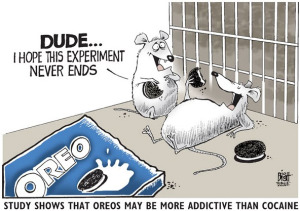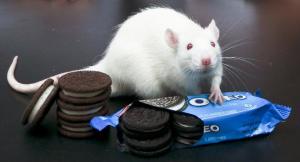Adderall is commonly used and sometimes even abused on college campuses everywhere. One may not be aware of the fact that initially Adderall was more commonly used for appetite control and weight loss because the chemicals in the consumers brain that are released suppress appetite. The real question is, does it work for those who do not have ADHD? Another commonly asked question is, are students imagining they are smarter and more focused because they are convinced that is what taking Adderall does?
Adderall belongs to the drug classes of Amphetamines and Dextroamphetamines. It is a stimulant for the central nervous system. When one takes Adderall, chemicals that were previously stored in the brain are released. The chemicals that are released are serotonin, dopamine, and adrenaline. All of these chemicals have an effect on the consumers mood and amount of energy. Addreall is prescribed to those who suffer from attention-deficit hyperactivity disorder (ADHD) or those who have the sleeping disorder Narcolepsy. When one takes this drug, they are shown to have an increased ability to focus and pay attention. This is helpful for students who struggle with ADHD because it is a simple solution that can help them to behave and be successful in a school environment. When being used correctly, Adderall can be one of the most beneficial things to a child or an adult who has been diagnosed with a disorder because it has the ability to allow them to conduct a normal life.
The problem with Adderall comes when it is being abused or taken by people who do not have prescriptions. Because it is so commonly prescribed, not only is it easy for one to illegally obtain but it also isn’t taken as seriously as it should be. There is a common misconception that Adderall is safe because it is given by doctors. Just like any other drugs on college campuses, Adderall can be abused and overdosed on. Most people do not know that Adderall has a high risk potential for a consumer to become addicted.
The appeal of Adderall is quite simple. It has the ability to eliminate any distractions whether they are big or small and chemically force ones’ brain to focus. The way it is described, this drug seems to ideal for any college student that believes they need a little extra push while studying for their exams or completing an assignment. The non-medical use of Adderall is a problem that is becoming increasingly prevalent on college campuses. A study completed throughout the years of 2006-2007 reports that, “Full-time college students aged 18 to 22 were twice as likely as their counterparts who were not full-time college students to have used Adderall nonmedically in the past year.” Although many could have guessed that teenagers not in school would not be trying to get their hands on Adderall, i think it is very important to realize that there is a dependency on drugs by college students to do something as simple as studying for a test. I understand that some people truly need Adderall to focus, but in this case the students who are twice as likely to use over the non students are using the drug non medically. This means they do not have a prescription to the drug. This new found dependency on study drugs such as Adderall is something that needs to be more closely researched and ultimately controlled.
A study was conducted at the University of Pennsylvania which tested the performance of forty seven participants on various cognitive tests. Every participant was tested on two types of pills which was either Adderall or a placebo. Of course the participants did not know which they were taking for the tests. Because the subjects were not aware of what pill they were taking, this can be seen as a blind study. The purpose of giving all of the participants pills each test was to eliminate any bias. If some people didn’t take a pill and others did, it would cause those who took the pill to work harder during the tests. Those who didn’t take a pill wouldn’t expect anything to different to happen so they could end up being unmotivated while being tested. I believe giving everyone a pill was a great way to ensure the validity of the outcome. None of the forty seven people tested were prescribed Adderall. After testing, those who took Adderall reported that they had done better on the test due to the pill even if in fact they have not. This can be due to the fact that the chemicals that Adderall causes to release in the brain puts the user in a better state of mind. So even if the Adderall has little to no effect on ones performance, their brain can be convincing them otherwise.
I agree with what the study has found. I always have believed that Adderall or the effect it has on a person is determined mainly by the way the consumer thinks it is going to effect them especially for those who are not diagnosed with ADHD. Personally, I believe that a humans’ mind is an incredibly powerful tool and undeniably has the ability to focus if one is convincing themselves that they just took a drug that was going to chemically change their brain for a period of time.
Sources:
http://www.businessinsider.com/effects-of-adderall-on-the-human-body-2012-9#it-releases-your-sense-of-euphoria–chemicals-called-serotonin-dopamine-and-adrenaline-1
http://www.self.com/life/health/2013/03/adderall-the-get-ahead-drug/
http://www.livescience.com/41013-adderall.html
http://healthland.time.com/2010/12/21/adderall-may-not-make-you-smarter-but-it-makes-you-think-you-are/














 Unfortunately for the criminal justice system, eye witnesses are mistaken far more often than people think. Every year, more than 75,000 eyewitnesses identify criminal suspects in the United States, studies suggest that as many as a third of them are wrong. Why not just get rid of eyewitness convictions you may ask? Well, if the criminal justice system can convict based on an eyewitness testimony, criminals would not have to act in fear of who could see them. An example of this is shown when a sixteen girl walking near a highway saw an old pickup truck with a camper shell. Continuing with her normal life, she didn’t think much about the van at the time. Surprisingly, a man grabbed her from behind and ripped at her clothes as she passed under the freeway overpass. As an act of self defense, she smashed her attacker in the face with a CD player and then ran away. Recovering from the hit quite quickly, her attacker was able to catch her again. This time he threw her into bushes and sexually assaulted her. As soon as she saw another car on the street, she ran to it. Luckily, the driver allowed the sixteen year old to get in the car. Although the victim was in too much shock to provide enough details for a composite sketch of the man who attacked her, she was able to recall the truck. A similar vehicle was spotted in the following days which driven by a twenty five year old construction worker from North Park. His picture was put in a photo lineup and the victim and another witness picked him out. But, recent DNA testing on the victim’s clothing cleared the man charged with the crime due to the faulty eyewitness testimony. Charges were dismissed and the man was freed from prison after serving eight brutal years.
Unfortunately for the criminal justice system, eye witnesses are mistaken far more often than people think. Every year, more than 75,000 eyewitnesses identify criminal suspects in the United States, studies suggest that as many as a third of them are wrong. Why not just get rid of eyewitness convictions you may ask? Well, if the criminal justice system can convict based on an eyewitness testimony, criminals would not have to act in fear of who could see them. An example of this is shown when a sixteen girl walking near a highway saw an old pickup truck with a camper shell. Continuing with her normal life, she didn’t think much about the van at the time. Surprisingly, a man grabbed her from behind and ripped at her clothes as she passed under the freeway overpass. As an act of self defense, she smashed her attacker in the face with a CD player and then ran away. Recovering from the hit quite quickly, her attacker was able to catch her again. This time he threw her into bushes and sexually assaulted her. As soon as she saw another car on the street, she ran to it. Luckily, the driver allowed the sixteen year old to get in the car. Although the victim was in too much shock to provide enough details for a composite sketch of the man who attacked her, she was able to recall the truck. A similar vehicle was spotted in the following days which driven by a twenty five year old construction worker from North Park. His picture was put in a photo lineup and the victim and another witness picked him out. But, recent DNA testing on the victim’s clothing cleared the man charged with the crime due to the faulty eyewitness testimony. Charges were dismissed and the man was freed from prison after serving eight brutal years.











